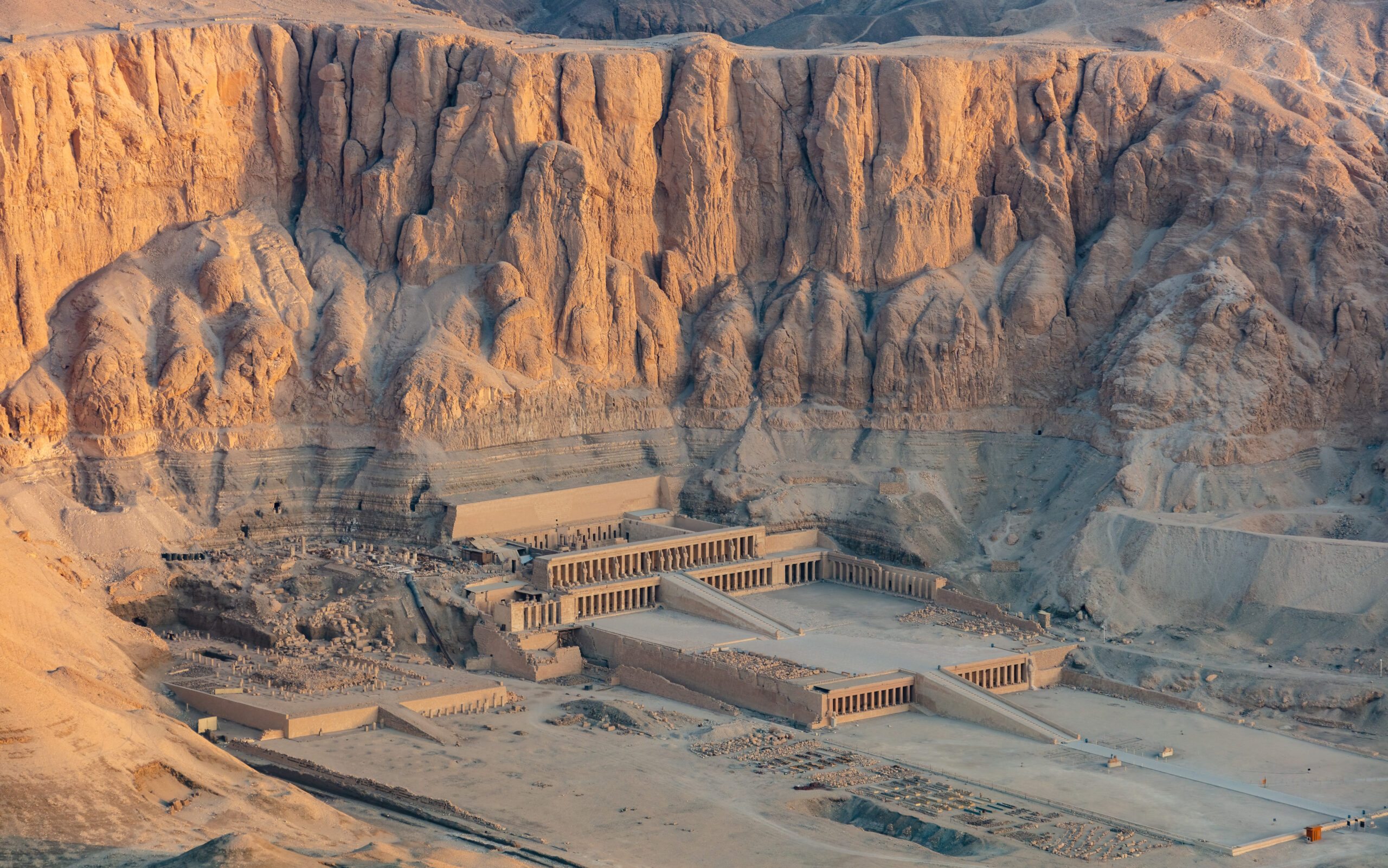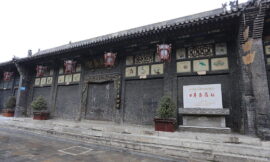The Temple of Hatshepsut at Deir el-Bahari stands as a remarkable testament to the ingenuity, power, and legacy of one of ancient Egypt’s most celebrated pharaohs. Situated on the west bank of the Nile River near Luxor, Egypt, this magnificent temple complex is dedicated to Hatshepsut, the fifth pharaoh of the 18th Dynasty, who reigned from approximately 1479 to 1458 BCE.
The temple was commissioned by Hatshepsut herself as a memorial to her reign and as a testament to her divine right to rule. Built within a natural amphitheater of towering limestone cliffs, the Temple of Hatshepsut is a masterpiece of ancient Egyptian architecture, blending seamlessly with the surrounding landscape and reflecting the queen’s desire to create a lasting monument to her greatness.
One of the most striking features of the Temple of Hatshepsut is its unique design, which consists of three terraced colonnades connected by ramps and stairways. The temple’s lower terrace is adorned with a series of colossal statues of Hatshepsut as the god Osiris, while the middle terrace features a colonnaded courtyard and sanctuary dedicated to the god Amun-Ra. The upper terrace, known as the Birth Colonnade, is decorated with scenes depicting the divine birth and coronation of Hatshepsut, reinforcing her claim to the throne and divine legitimacy.
The temple’s architecture and decoration are a testament to Hatshepsut’s ambition and vision, with intricate reliefs, statues, and hieroglyphs that celebrate her achievements as a ruler, diplomat, and warrior. Scenes from her military campaigns in Nubia and the Sinai Peninsula adorn the walls of the temple, depicting her victorious battles and triumphant return to Egypt with spoils of war.
In addition to its religious and political significance, the Temple of Hatshepsut also served as a center of cultural and economic activity in ancient Egypt. The temple complex housed workshops, storerooms, and administrative offices, where artisans, scribes, and bureaucrats worked together to manage the kingdom’s affairs and maintain its prosperity.
The Temple of Hatshepsut fell into disrepair following her death and was later vandalized and partially destroyed by her successors, who sought to erase her memory from history. In the centuries that followed, the temple was buried beneath layers of sand and debris, its existence forgotten until its rediscovery by modern archaeologists in the 19th century.
Today, the Temple of Hatshepsut stands as one of Egypt’s most iconic and visited archaeological sites, attracting millions of tourists from around the world who come to marvel at its grandeur and explore its mysteries. Guided tours of the temple provide valuable insights into its history, architecture, and significance, allowing visitors to appreciate the ingenuity and craftsmanship of the ancient Egyptians who built this remarkable monument.
With its towering columns, majestic statues, and richly decorated halls, the Temple of Hatshepsut continues to inspire wonder and awe, serving as a testament to the enduring legacy of ancient Egypt and its profound impact on human history and civilization. Hatshepsut’s temple at Deir el-Bahari stands as a testament to her greatness and enduring legacy, ensuring that her memory lives on for generations to come.



